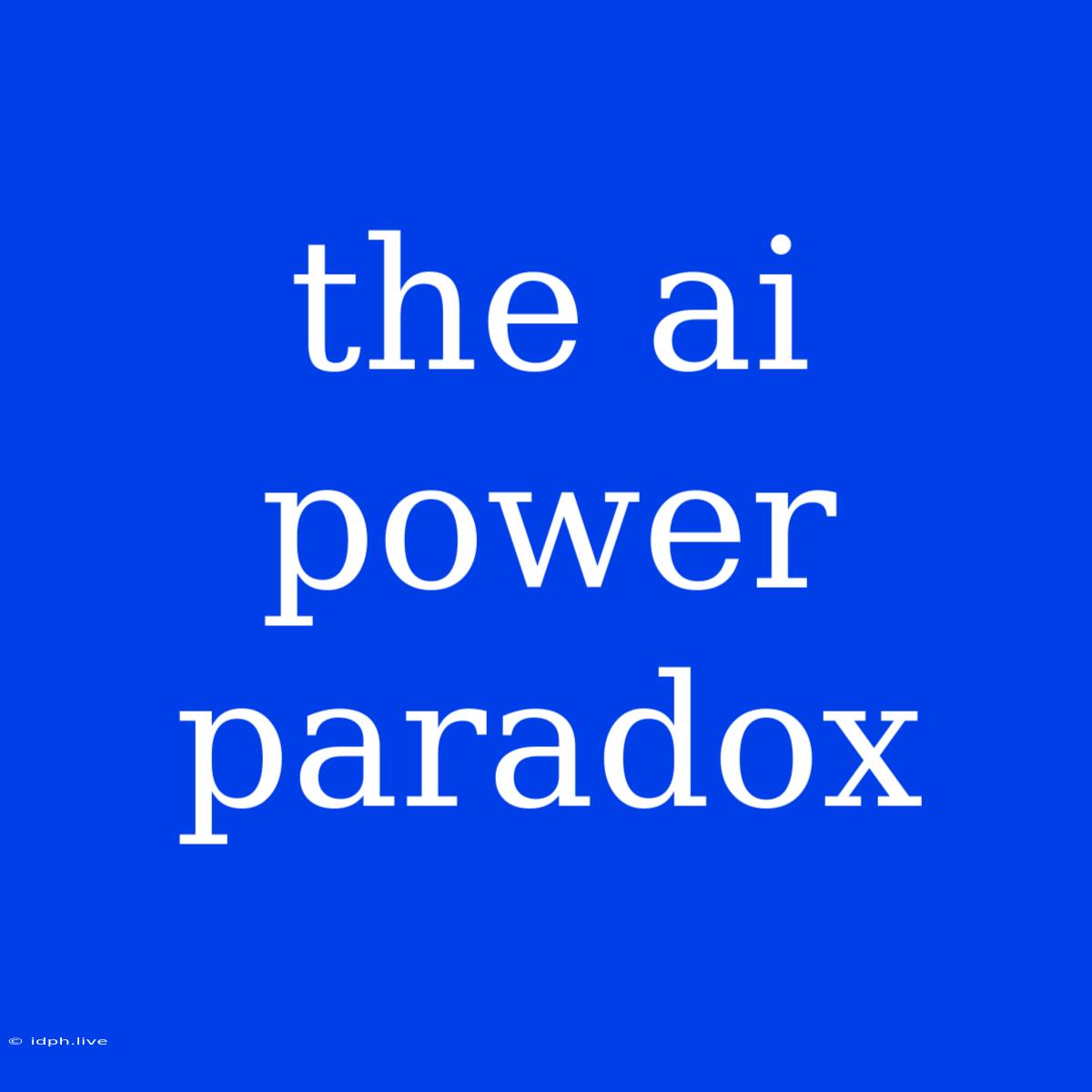The AI Power Paradox: A World of Potential, Yet Limited by Human Bias
Artificial intelligence (AI) is rapidly transforming our world. From self-driving cars to personalized healthcare, AI promises to revolutionize countless industries and aspects of our lives. Yet, amidst the excitement, there's a growing awareness of the AI Power Paradox. This paradox highlights the stark contrast between AI's immense potential and the limitations imposed by the human biases that shape its development.
The Promise of AI: Unlocking New Possibilities
AI's potential is undeniable. It can analyze vast datasets, identify patterns, and make predictions with speed and accuracy far exceeding human capabilities. This opens up exciting possibilities across various fields:
- Healthcare: AI can assist in disease diagnosis, drug discovery, and personalized treatment plans.
- Finance: AI can help detect fraud, optimize investment strategies, and provide personalized financial advice.
- Education: AI can personalize learning experiences, provide real-time feedback, and offer individualized tutoring.
- Manufacturing: AI can optimize production processes, automate tasks, and improve quality control.
- Transportation: AI can improve traffic flow, develop self-driving cars, and enhance safety on roads.
The Paradox: Human Bias Shaping AI's Reality
Despite its immense potential, AI is not immune to the limitations of its creators. Human biases, embedded in the data used to train AI systems, can lead to discriminatory outcomes.
Here's how the paradox unfolds:
- Data Bias: AI systems are trained on vast datasets, which often reflect existing societal biases. This can lead to algorithms that perpetuate discrimination in areas like hiring, lending, and criminal justice.
- Algorithmic Bias: The algorithms themselves can exhibit bias, reflecting the assumptions and limitations of the developers. This can lead to systems that are unfair or even harmful to certain groups.
- Lack of Diversity: The lack of diversity in the AI workforce can also contribute to biased outcomes. When AI is developed primarily by people from a limited range of backgrounds and perspectives, it can fail to address the needs and challenges of diverse populations.
Navigating the Paradox: Towards a More Equitable AI Future
Addressing the AI Power Paradox requires a multi-pronged approach:
1. Data Diversity and Fairness:
- Data Collection: Collecting diverse and representative datasets is crucial to mitigate bias.
- Data Cleaning: Identifying and removing biased data points from training sets is essential.
- Data Augmentation: Creating synthetic data to represent underrepresented groups can help improve fairness.
2. Algorithmic Transparency and Explainability:
- Transparent Algorithms: Developing algorithms that are easily understood and interpretable can help identify and address biases.
- Explainable AI (XAI): Creating tools and methods to explain AI decisions can help build trust and ensure accountability.
3. Diverse and Inclusive AI Workforce:
- Education and Training: Investing in education and training to diversify the AI workforce is essential.
- Mentorship and Support: Creating programs to support and mentor underrepresented groups in AI can help create a more inclusive field.
Conclusion: Embracing AI's Potential While Addressing Its Limitations
The AI Power Paradox presents a significant challenge, but it also highlights the need for a responsible and ethical approach to AI development. By acknowledging the potential for bias, actively addressing it through data diversity, algorithmic fairness, and inclusive workforce practices, we can unlock the full potential of AI for a brighter and more equitable future.

